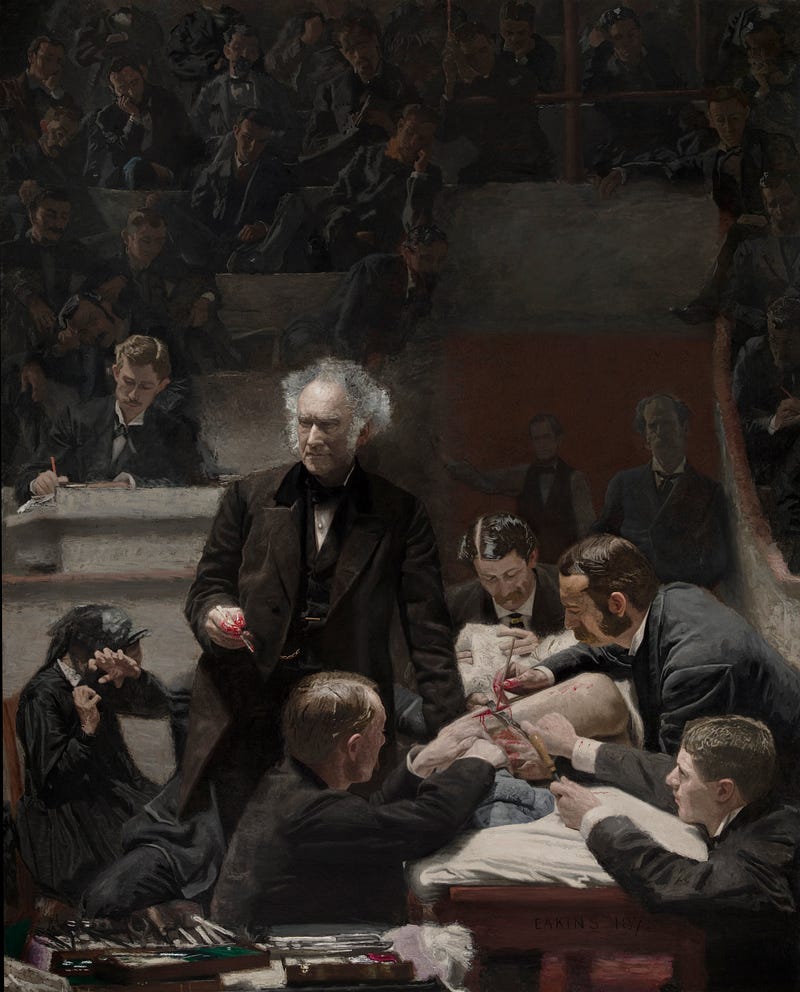The Challenge of Communicating Simple Messages Effectively
Written on
The Importance of Hand Hygiene
Everyone is aware of how to wash their hands, even young children grasp the concept. Yet, this awareness doesn't always translate into action. The question arises: why have handwashing rates among healthcare professionals reverted to pre-pandemic figures? Why is it so challenging for individuals to adopt straightforward behavioral changes that could have a significant impact?
For those who have attempted to convey a message—essentially anyone involved in marketing—the tale of Ignaz Semmelweis serves as a stark reminder of how difficult it can be to communicate vital yet simple ideas.
A Simple Solution to a Major Problem
In 1846, Ignaz Semmelweis began his tenure at the Allgemeines Krankenhaus in Vienna, Austria's largest and most esteemed hospital. He noticed a stark difference in mortality rates between maternity wards managed by midwives (2%) and those run by physicians (18%). The primary cause of these deaths was childbed fever, known today as sepsis.
After thorough observation, Semmelweis connected the dots when a doctor succumbed to sepsis after an autopsy. He deduced that the illness was transferable from corpse to scalpel, subsequently infecting the physician. Doctors were moving from autopsies directly to maternity wards, carrying infectious material on their hands, while midwives, who didn't perform autopsies, maintained lower mortality rates.
By mandating handwashing with chlorinated lime for anyone entering the delivery room, Semmelweis achieved a drastic reduction in mortality rates to below 2%. This should have marked a turning point in understanding disease transmission. However, rather than acceptance, he faced ridicule, dismissal, and ultimately termination. His grasp of disease principles was overshadowed by the medical community’s prevailing belief that diseases stemmed from foul air.
The Need for Effective Messaging
While it might seem peculiar to think that something as fundamental as handwashing required marketing, the reality is that it did—then and now. In 2017, the Centers for Disease Control and Prevention reported that healthcare providers cleaned their hands only half as often as necessary. The struggle to promote hand hygiene remains a challenge, echoing Semmelweis' experiences.
With the advent of the pandemic, the once-ignored message about hand hygiene surged to prominence, gaining traction like never before. Semmelweis's struggles were finally addressed, though tragically, not in his time.
The Power of Belief Over Fact
Given that Semmelweis's discovery could save lives with a simple act, it's astonishing to consider why his message failed to resonate. Blaming the physicians is easy—why couldn't they recognize the obvious? The reality is that the issue extended beyond mere behavior change; it required a shift in belief systems.
The medical consensus at the time held that diseases were airborne. Embracing handwashing would have meant acknowledging that their foundational beliefs were flawed, a difficult pill to swallow. As the World Health Organization points out, Semmelweis's significant error was implementing a systemic change without seeking input from his colleagues.
Understanding Resistance to Change
Remember the wave of misinformation that accompanied the pandemic? Claims about the virus being linked to 5G or other unfounded theories spread like wildfire. If someone believes in a particular narrative, presenting them with contradicting evidence often fails to change their viewpoint. Semmelweis's approach was similarly flawed; his combative demeanor alienated many in the medical community.
For fourteen years, he hesitated to publish his findings, and when he finally did, his work was described as tedious. His limited proficiency in German further hindered his ability to communicate effectively, leaving him without a supportive audience.
Lessons from History
The lessons drawn from Semmelweis's struggles with promoting handwashing resonate today. Simple messages often require time to take root in public consciousness. For instance, when U.S. President Andrew Garfield was shot in 1881, he died not from the bullet but from sepsis, contracted due to unclean hands from the attending physicians.

The evolution of medical practices regarding cleanliness is depicted in Thomas Eakins' paintings, illustrating the transition from unsanitary conditions to the embrace of antiseptic techniques.
Despite the advancements in understanding germ theory and the urgent campaigns for hand hygiene, many have reverted to old habits post-pandemic. The persistence of healthcare-associated infections indicates that changing behavior is a long-term endeavor.
The Importance of Patience in Messaging
Marketing often expects immediate results, but the reality is that altering deeply ingrained beliefs and behaviors takes time. Campaigns that aim to change public perception should be prepared for a lengthy process, as evidenced by the challenges Semmelweis faced.
In conclusion, whether in healthcare or broader marketing contexts, communication of fundamental messages like hand hygiene requires not just facts, but also understanding and patience. It’s a reminder that even simple messages can be the hardest to convey.
Want more insights into effective marketing strategies? Subscribe to the Better Marketing newsletter, The Marketing Memo.
Chapter 2: Effective Communication Techniques
This video explores essential communication techniques that help convey messages more effectively, drawing parallels to historical examples.
Chapter 3: Simplifying Complex Ideas
This video discusses methods for simplifying complex concepts for better understanding and engagement, essential in marketing and communication.